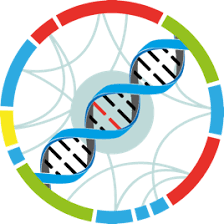Study : Trancriptomic analysis of flower bud dormancy in sweet cherry
Identification
Name
Trancriptomic analysis of flower bud dormancy in sweet cherry
Identifier
dXJuOkVWQS9zdHVkeS9QUkpOQTU0MDIzNQ==
Description
Bud dormancy is a crucial stage in perennial trees and allows survival over winter and optimal subsequent flowering and fruit production. Environmental conditions, and in particular temperature, have been shown to influence bud dormancy. Recent work highlighted some physiological and molecular events happening during bud dormancy in trees. However, we still lack a global understanding of transcriptional changes happening during bud dormancy. We conducted a fine tune temporal transcriptomic analysis of sweet cherry (Prunus avium L.) flower buds from bud organogenesis until the end of bud dormancy using next-generation sequencing. We observe that buds in organogenesis, paradormancy, endodormancy and ecodormancy are characterised by distinct transcriptional states, and associated with different pathways. We further identified that endodormancy can be separated in two phases based on its transcriptomic state: early and late endodormancy. We also found that transcriptional profiles of just 7 genes are enough to predict the main cherry tree flower buds dormancy stages. Our results indicate that transcriptional changes happening during dormancy are robust and conserved between different sweet cherry cultivars. Our work also sets the stage for the development of a fast and cost effective diagnostic tool to molecularly define the flower bud stage in cherry trees. Overall design: Branches and flower buds were collected from four different sweet cherry cultivars with contrasted flowering dates: ‘Cristobalina’, ‘Garnet’ and ‘Regina’ which display extra-early, early and late flowering dates, respectively. Ten or eleven dates spanning the entire period from flower bud organogenesis (July 2015) to bud break (March 2016) were chosen for RNA sequencing. For each date, flower buds were sampled from different trees, each tree corresponding to a biological replicate.
Active
No
Genotype
| Accession number | Name | Taxon |
|---|
